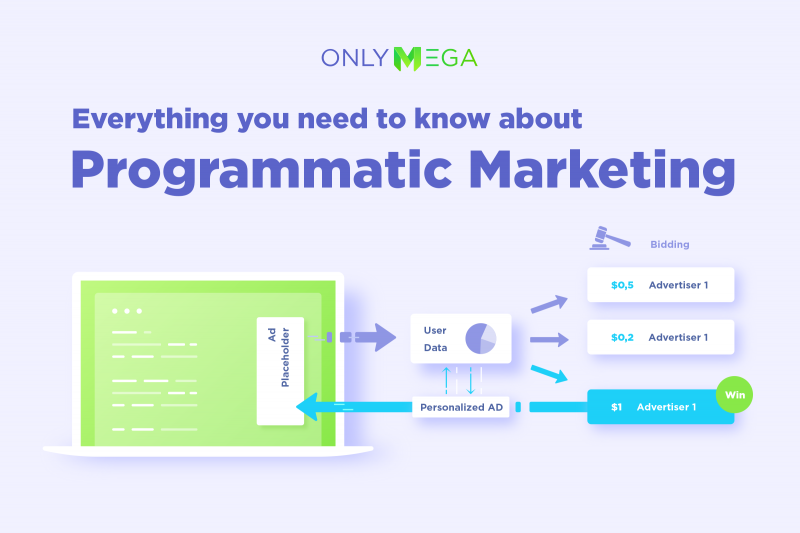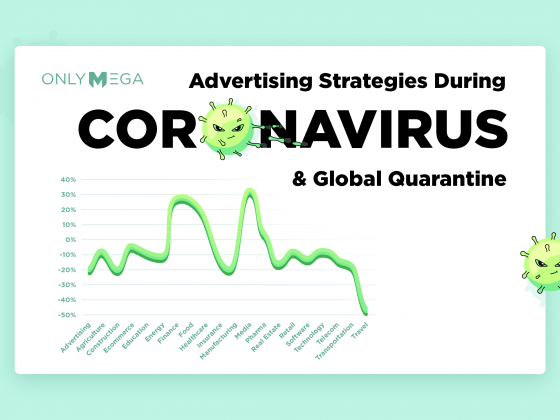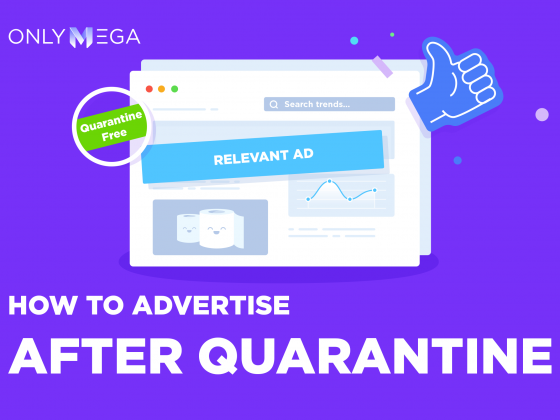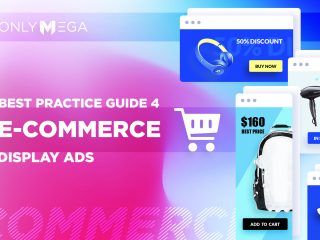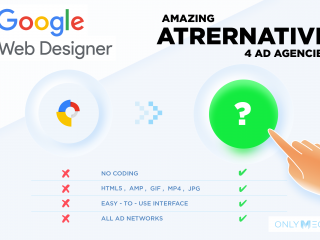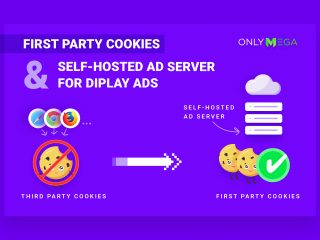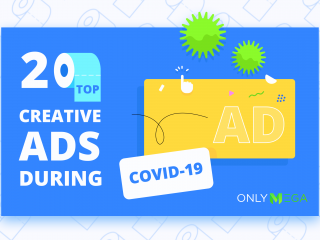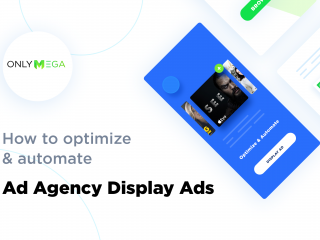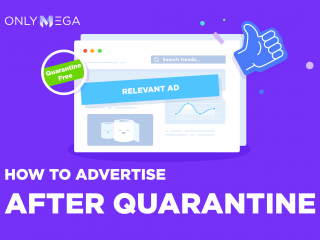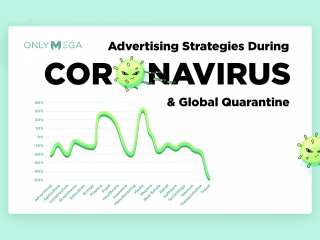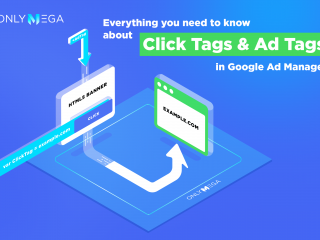In this article, we’re going to discuss the ambitious opportunities behind programmatic marketing. And if you’re completely new to this term, what Programmatic Marketing or Advertising mainly consists of in terms of what it is, how it works, advantages and much more.
Programmatic Marketing: The Definitive Definition
When first reading about Programmatic Marketing things can seem more than a bit confusing and even baffling. Especially when finding out that this method involves millisecond long auctions while a page is loading and algorithms (advertiser’s biggest fear). Yep, you may be at a bit of a loss here.
No worries though, we got you covered. We found a much simpler way to define the term:
Programmatic Marketing is an automated bidding form on advertising inventory, which takes place in real-time, to a specific user, with specific characteristics (or behavior type), in a specific context.
By definition, when seeking to get that specific, this is where programmatic marketing steps in. Being a general term, think about it as based real-time ad bidding and as a real-time transaction to bid.
Still lost? Keep on reading. By the end of this article, we promise you’ll have a handful of answers!
Programmatic Marketing in Numbers
You may be asking yourself, “what’s in it for me?”. Why is Programmatic Marketing something you should be adding to your marketing efforts within your business?
There are many opportunities when it comes to Programmatic. On one hand, you have Google targeting 60% of digital budgets on Programmatic in 2019 and data that shows that Programmatic will be taking over the majority of all digital advertising spending over the next few years.
Consequently, according to a recent study from the World Federation of Advertisers, Programmatic is widely popular in North America with 31% of digital budget being spent on it through 2017-2018.
Programmatic Marketing is Paving the Way to Change
The numbers look great, however, there are many marketers out there who lack the knowledge of Programmatic and are reluctant to give up previous purchasing methods for ads.
It’s only natural, as when something this new and this powerful is introduced, it might be a lot to take in. But surely, programmatic marketing will finally pave the way to change the way we bid ads.
The truth is, a bit of knowledge and practice can go a long way for your business. And for anyone reading this post, know that you too can take advantage of Programmatic in the future.
Steps: How Programmatic Marketing Works
Up until now, we’ve been selling you on the idea of how amazing Programmatic is, but if you don’t know how it works, you’ll never reap the benefits.
So let’s dive into how it works:
1. Imagine a potential lead is clicking on a web page that contains an advertising space configured for Programmatic.
2. The page’s publisher decides to put up and ad impression for auction in an ad marketplace.
3. The ad marketplace will run an auction amongst any advertisers interested in displaying ads within that specific space when a lead clicks on that page.
4. Like with any competition, especially online, you’ll have various advertisers bidding during the auction. However, whichever is ultimately willing to bid the highest naturally wins the auction.
5. When advertisers are bidding, they would already know everything about users loading the specific page. Based on this data, they set a max bid.
Because of this you can create tailored and targeted audiences like never before. What type of audience can you create? Let’s take a look:
- 1. You can create an audience from a list of direct emails from your customers.
- 2. From the data provided by your chosen DSP (A demand-side platform is a system that allows buyers of digital advertising inventory to manage multiple ad exchange and data exchange accounts through one interface.)
Example: Let’s say one of your potential clients has purchased shoes costing over $100 in the past 30 days. This data is gathered from the email receipts the user received (yes, your purchase data is available to advertisers) which is useful data for the DSP.
On the other hand, if you’re using the Google DSP, you’ll access data gathered from across all Google services, which include, Gmail, YouTube, Android, Geolocation, etc. All of this information is available to advertisers looking to create campaigns on Google’s DSP.
- 3. From third party data providers. For instance, you’ll be able to purchase data regarding a certain audience with a specific health issue. Of course, all of this data is provided anonymously. Once the advertiser accesses this information, all they are able to see are numbers. Total number of users, the approximate number of impressions, and so on. No personal information such as name/email/phone is every disclosed.
You’ll be able to create specific ads and create specific rules for each of them.
For instance, if you’re looking to target people with a specific health issue, you’ll want to show a specific ad during the first week of each month and no more than 10 times. You can also create an ad sequence. This means you can create different types of banners and show the user a storyline via your ads. All of this by targeting your audiences through Programmatic Marketing.
5. Finally, the winner’s ad is displayed to their customers once the page loads.
Once the user loads the page, the audience the user belongs to, will make them visible to advertisers that want to start bidding. Each advertiser, at this point, sets the max bid for a specific audience.
Example: Let’s say there is a user regularly purchasing from luxury apparel brands. Their audience group belongs to “luxury apparel buyers” and the highest bids for users like these will differ from those who sell kitchen accessories.
Now, this process is entirely automated. Any max price each advertiser is willing to bid per impression has already been set. You now understand why Programmatic Marketing is defined as a “millisecond long ad auction”. This auction or competition is completed within the same milliseconds it takes for the specific page to load.
Amazing right? Let’s keep going!
The 6 Advantages of Programmatic Marketing
Now that you know how the ropes work, it’s time to learn about the advantages Programmatic can have for your business.
- It’s Automatic. Programmatic Marketing will potentially open many doors. Since it’s automatic, you don’t have to sit behind your computer waiting for the next auction to happen to start bidding. None of this would be a possibility if any of the steps were done manually (even if it was done before, yikes!)
- No Pre-negotiation. Programmatic marketing allows advertisers to get a hold of any type of digital media without having to go through the pre-negotiation stage of pricing. They’ll pay the relevant impression they actually are looking to receive.
- Minimum Budget. Bidding doesn’t mean you pay fortunes to display your ad. You can sign up for minimum numbers of impressions and budgets. This potentially makes any digital advertising you do, more flexible.
- Buy Digital Media. You can buy any piece of digital media across publishers, which ends up reducing administrative costs.
- Bid for Individuals. Programmatic marketing allows you to arrange bids for each individual who accesses the site, so people are now being targeted to a greater extent than ever before.
- Customer Data. Programmatic Marketing technology can identify users by behaviors, purchases, what they like, etc (anonymously). Remember no personal data is ever disclosed.
Ad Blockers and Programmatic Marketing/Advertising
Believe it or not, Programmatic ads have been around for some time now, even if the term is fairly new for you. The issue is, that with the advancement of programmatic advertising, consumers and users are becoming aware of their personal data being used to serve them ads across the web. Which is one of the reasons why ad blockers have become so popular in the last few years.
Now, with Google’s new move regarding their own “adblocker” the game is still changing.
Nevertheless, there may be many reasons why users decide to install an adblocker into their computers and other devices, which depend on personal use. But one thing’s for sure, they don’t really want to see ads or know about their data being used.
Is there a way to solve this? Well… There is.
Adblocker’s Bottom Line: Advertising Needs to Evolve
This is what it all comes down to. Users don’t want the same advertising methods being force-fed to them, especially while the concern over data security grows. Publishers, marketers, and advertisers need to become more aware of this and serve ads people actually want to see and engage with.
Programmatic advertising is a great tool for just about anyone who is looking to up their advertising game. And although this may be true, anyone in the business needs to evolve with users. Because it just won’t be the other way around.
Available Formats of Programmatic Advertising
You can now create ads using this technology in a variation of advertising formats. About 10 years ago, Programmatic only supported display advertising, but now, you have a wider range of options:
1. Display
This is the oldest programmatic advertising format. Then again, Display doesn’t have to be static and boring. You now have the chance to create banners for display campaigns that are animated and creatively designed, by using tools like OnlyMega.
Nowadays ads are more dynamic due to technological developments over the past years. You can create display campaigns for various devices that target the right client with the right offer at the right time.
2. Video
This is key for anyone who owns a business. It’s a known fact that video has grown in the past decade or so and has become one of the most powerful advertising tools online.
Check this: Programmatic video spend has been $13.4 billion in what goes of 2019. So you know people are spending their money where it matters.
3. Native & Social
Programmatic ads can mix into the content on social media, websites or apps. You can tailor your ads to contextual targeting as well.
And get this, DSP’s now allows advertisers to buy programmatically across major social media platforms.
3. Voice
Since Alexa (Amazon) and the great growth of streaming apps (Spotify), voice has reemerged into another popular advertising format. Furthermore, this offers a very rich source of contextual and user-focused targeting. Imagine how specific you can get with your advertising in voice, with all the information streaming services have from their millions of users? Seeing this growth, Google is now offering advertisers the chance to purchase programmatic audio ads through their own DSP too.
4. Digital out-of-home (DOOH)
Out of home advertising is new for Programmatic. The truth is, the production process of advertising is coming to an end. What was in the past known as advertiser -> agency -> media seller ->printer, is getting extinct rather soon. In its place – DOOH.
This integration across existing programmatic platforms offers the possibility of real-time ad optimization and reactivity.
5. Television
Programmatic is not yet big on T.V. Yet, large industries such as SKY, Google and Netflix are laying out the groundwork for the needed support programmatic will need on this platform. This is the most under-developed format up to date.
How to Buy Programmatically
Now it’s time you start pulling on those ropes. In order to do this the right way from the, you’ll need to ask yourself and your team a few questions. Why? Because like in any marketing/advertising move, you first need a goal and a strategy for optimal results.
3 Key Points for Laying out your Strategy:
- Will this help reach your target audience. If so, is the target audience already clear to you?
- How will programmatic be used for your brand? Brand awareness vs. Conversion driving?
- How will programmatic advertising improve your business potentially?
Once you know what you’re working with, you’ll be in the clear as to what your next move is.
After you’ve determined your strategy, it’s time you pick the correct DSP for your brand. There are many providers and in order to land the right one, you’ll need to get a few things sorted out as well:
What should you consider when choosing a DSP:
1. What audience are you hoping to reach? Different DSPs will offer different reaches, segmentation, and channels depending on the target market you want to reach. It’ll be important to define if your DSP works for the target audience you need to reach.
2. How will charging with your DSP work? You’ll have a couple of options:
- CPM (cost per thousand)
- CPC (cost per click)
Normally, DSPs that charge on CPM are known to be more transparent with costs.
3. Does your DSP provide support? It’s always better you choose an agency-style DSP so that you can get support when you need it. Most importantly when launching campaigns, optimization, and set-up.
4. Make sure your chosen DSP is able to execute cross-channel strategies.
5. Hey, you get what you pay for. Facts are facts! Do your research regarding DSPs in terms of optimization, targeting, control, and support. You’ll need to have your mind set on paying good money for quality.
Once you’ve chosen. Get ready to test out different ad formats, creatives, and personas. As well as experiment with bid strategies and more.
The Future of Advertising (Programmatic or not)
As mentioned earlier, programmatic is nothing new, nonetheless, it’s in constant evolution. From the growing formats it supports, to technology, regulations and such, it’s exciting to try something that is in constant improvement.
Though as technology advances, so do the users, which are ultimately the ones who keep advertising alive. The battle for data privacy, ad blockers, cookies, and just plain disturbing advertising is still on the table and should be considered by you and your team.
In this day and age, as much as there is a new and evolved way of marketing and advertising, the ways we advertise need to evolve. Transparency in the digital marketing industry is a key consideration nowadays, serving great ads from creatives to strategies, will definitely be the way to go for years to come.
Have any questions or concerns about creating ads for your next big Programmatic Advertising move? Contact us! We are happy to help.

